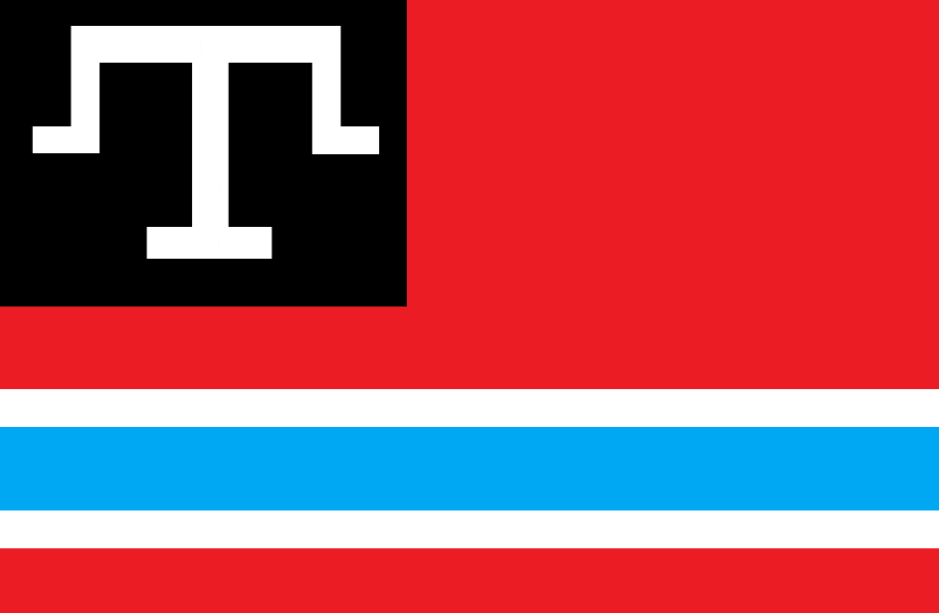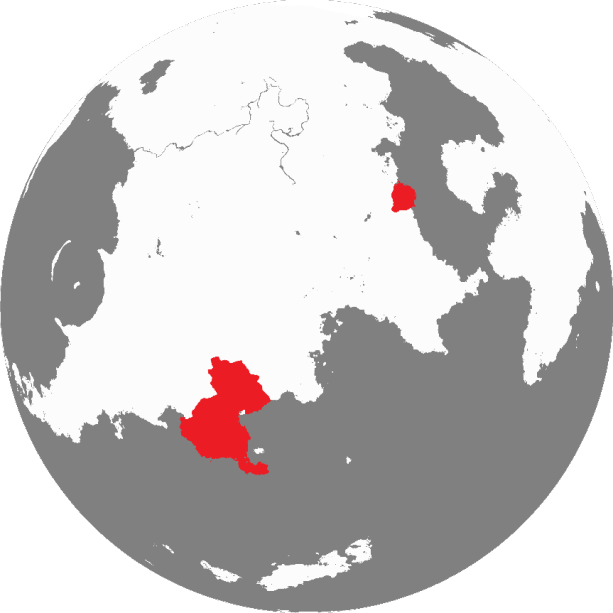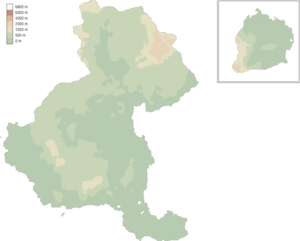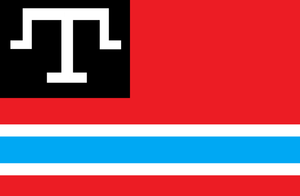Sahrland-Bastia
|
Sahrland-Bastia-Commonwealth
Sahrlandiya y Bastiano/Sahrlandiya y Bastiya
|
|||||
|---|---|---|---|---|---|
 |
|||||
| Motto | "Persistence Indefinite" | ||||
| Common Name | Sahrland-Bastia | ||||
| Anthem | "Hijos de Bastia" | ||||
 |
|||||
| Demonym | Commonard/Bastian/Sahren | ||||
| Official languages | Sahrland/Bastian/Upper bastian | ||||
| Currency | Rút | ||||
| Politics | |||||
| Capital | Vuchalla | ||||
| Government | Federative Republic | ||||
| Foundation | 2146 | ||||
| Preceded by | n/a | ||||
| Followed by | n/a | ||||
| Demography | |||||
| Ethnicities | 79.71% Egercian 6.1% Zokesian 3.13% Tekkian 7% Bastian 2.3% other 1.24 Pugaryan 0.57 Nuvan |
||||
| Population | 2,415,000 | ||||
| Area | 20'791 km² | ||||
Etymology
Sahrland-Bastia was named after the two countries that make it up. The country retained the Bastia name despite the loss of the Bastia territory itself, all of which remaining was upper bastia.
Geography
The Upper Bastian region has little rainfall and consists of savannahs and deserts. The Sahrland region consists of cooler steppes, being both east of the mountains but also so north that the mountains are foothills.
Urban Areas
###
Politics
Government
The government of Sahrland-Bastia was a loose federation in which presidents from both states shared power. The Pairliament Grande had 130 delegates elected from all member states according to ratios of population. Each state was free to enact their own laws, have their own separate militaries, and to an extent pursue their own trade policy.
Subdivisions
The commonwealth was divided into the Republic of Bastia and the Kingdom of Sahrland.
Foreign Relations
Sahrland naturally sought closer ties to the east of Kolus and Kafrica and to isolate itself from the rest of kerbin. Bastia naturally sought closer ties to west Kolus. The two ideals were a consistant point of division preventing effective geopolitical maneuvering.
Demographics
Languages and Culture
The Sahrland-Bastia commonwealth was very diverse containing Egercians, Bastians, and Zokesians. To a lesser degree there were also Wusters, Nuvans, and Hartfordians. Population density varied by member state too, by 2150 Bastia had 21.85% of the population at 426,000~ citizens and Sahrland 76.15% at 1,950,000~, with the remaining 2% being Sahren Chadastok at 39,000~.
A policy of linguistic reform was enacted for the entire Commonwealth's existance with the goal of making a majority of citizens fluent in both Bastian and Egercian. While this policy bore some fruit, long term success is unknowable as the state dissolved only after 53 years.
Education
###
Religion
###
Age
###
Military
The military of Sahrland-Bastia was federalised in times of peace and unified into one command in times of war. Even the very small Sahren military was much larger than the Bastian military, which both are a result of misplaced trust in isolation and disregard for countries other than their own.
Economy
Taxation
###
Transport
###
Energy and Infrastructure
Zokesian businesses helped to rebuild much of the infrastructure in Bastia after the civil war, which linked it to the Zokesian economic sphere. Sahrland had less assistance from Tekkia and much of the infrastructure was outdated or destroyed. This led to the Sahren economy developing around their lack of infrastructure rather than recovering properly. Maritime trade was the only link between Sahrland and Bastia so these issues were never effectively addressed.
Trade
###
Science
###
History
End of the Civil War
The end of the civil war resulted in the creation of the Sahrland-Bastia commonwealth, in which Bastia was effectively forced into joining. The two countries were quickly transformed from a minor power to a secondary power together.
Treaty of Phoezi
In early 2148 the treaty of Phoezi expired which declared Nuvastia had to be created from all of it's former territory. The treaty was renegotiated for most of the year and the proper Bastian region was released as Nuvastia with Upper Bastia remaining in the commonwealth and Wardia remaining Zokesian. The state retained the name "Republic of Bastia" despite this.
Dissolvement
In Aughtafael of 2197 the Commonwealth was in decline. the AUghtafael coup was launched by the Sahren-Republican-Guard-of-Internal-Affairs and a portion of the Bastian army intended to seize control and abolish reforms that they believed were doing more harm than good. The coup failed and helped accelerate the decline as the Bastian government was destroyed and had to be re-established. 2 months later on Khelad 27th the Republic of Bastia left the Sahrland-Bastia Commonwealth. On the 28th Sahrland left the Commonwealth and the country technically existed without territory for 6 more days before it was officially dissolved.
Legacy
The policies enacted by the Sahrland-Bastia commonwealth created a unique political situation between its member states. Their economic leanings were to two different powers, but they had great potential to act as a third economic sphere in kolus. Commonwealth legacy also left the two states as historical allies. Commonwealth nostalgia has seen significant popularity and still influences policies to this day. Much of the public work projects of the government are now undertaken by the Community of Commonards in Bastia.
About The Flag
The flag consists of the standard sahrland flag with a blue stripe with white borders going through the bottom of the flag, with The flags of it's member states may use either their flag or the Commonwealth flag.

